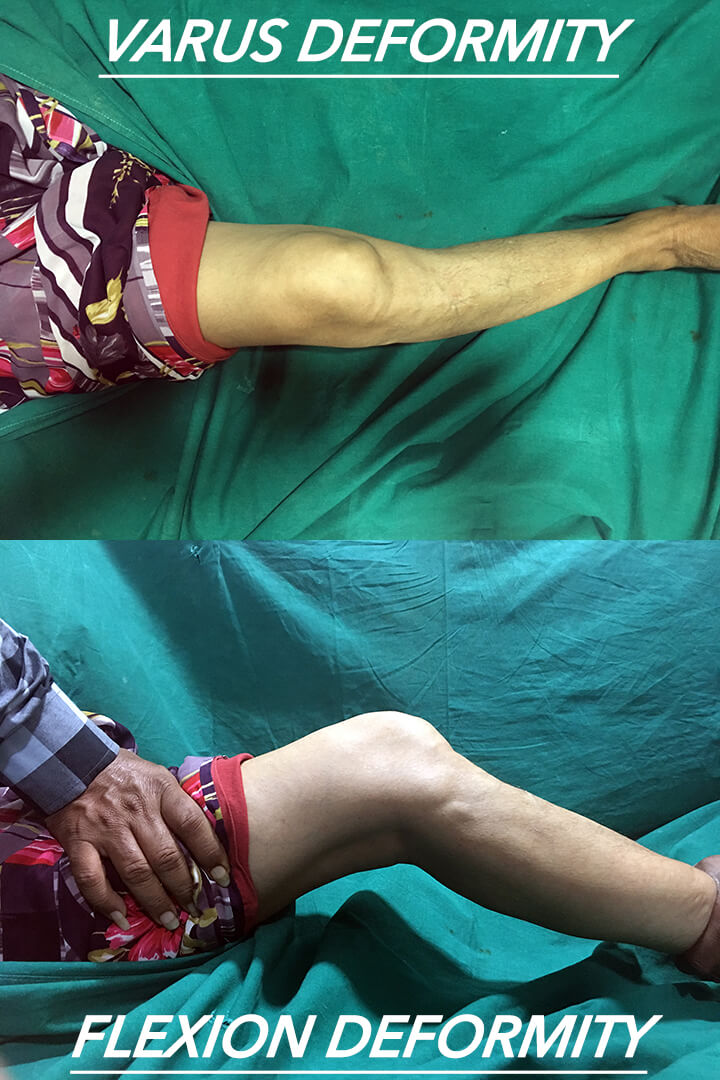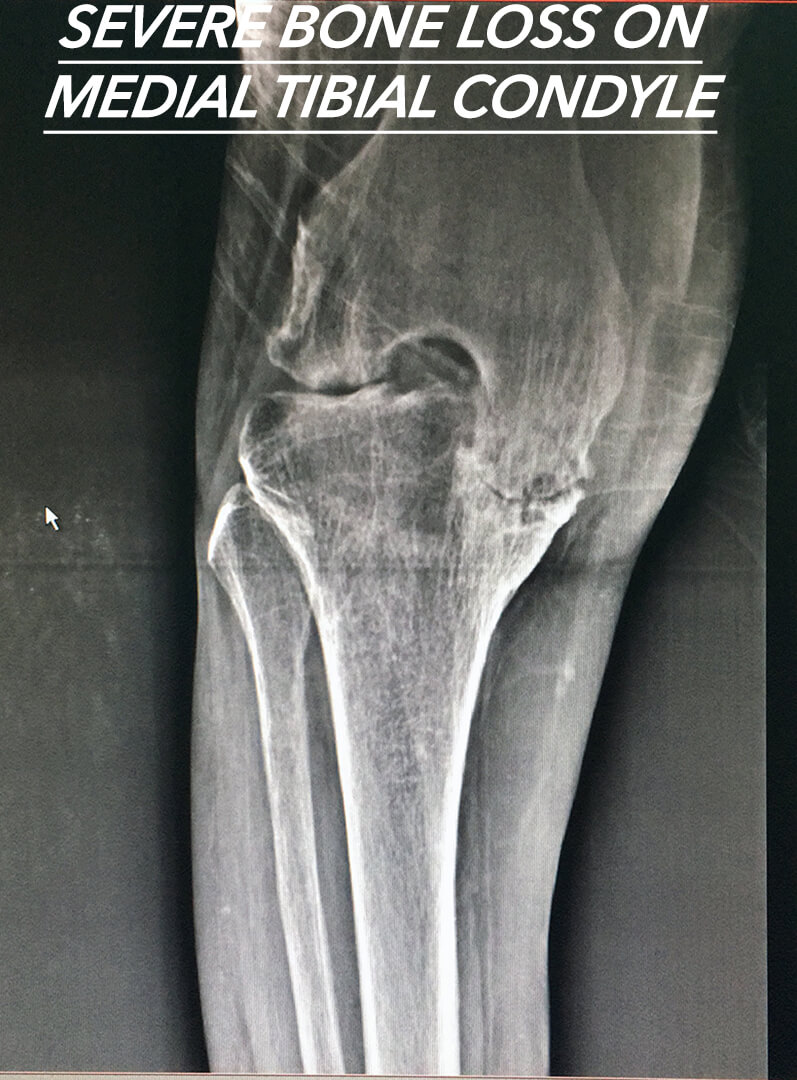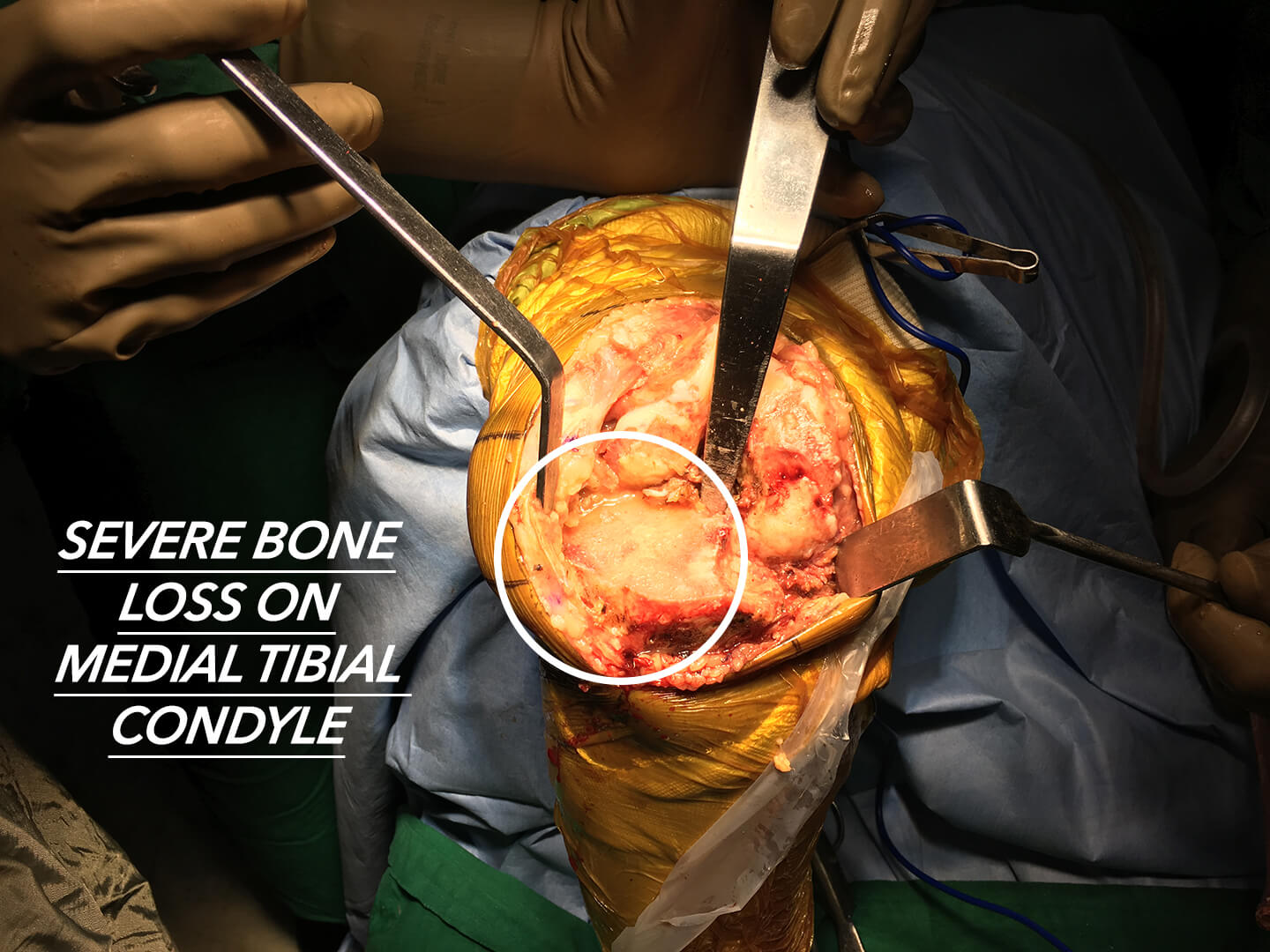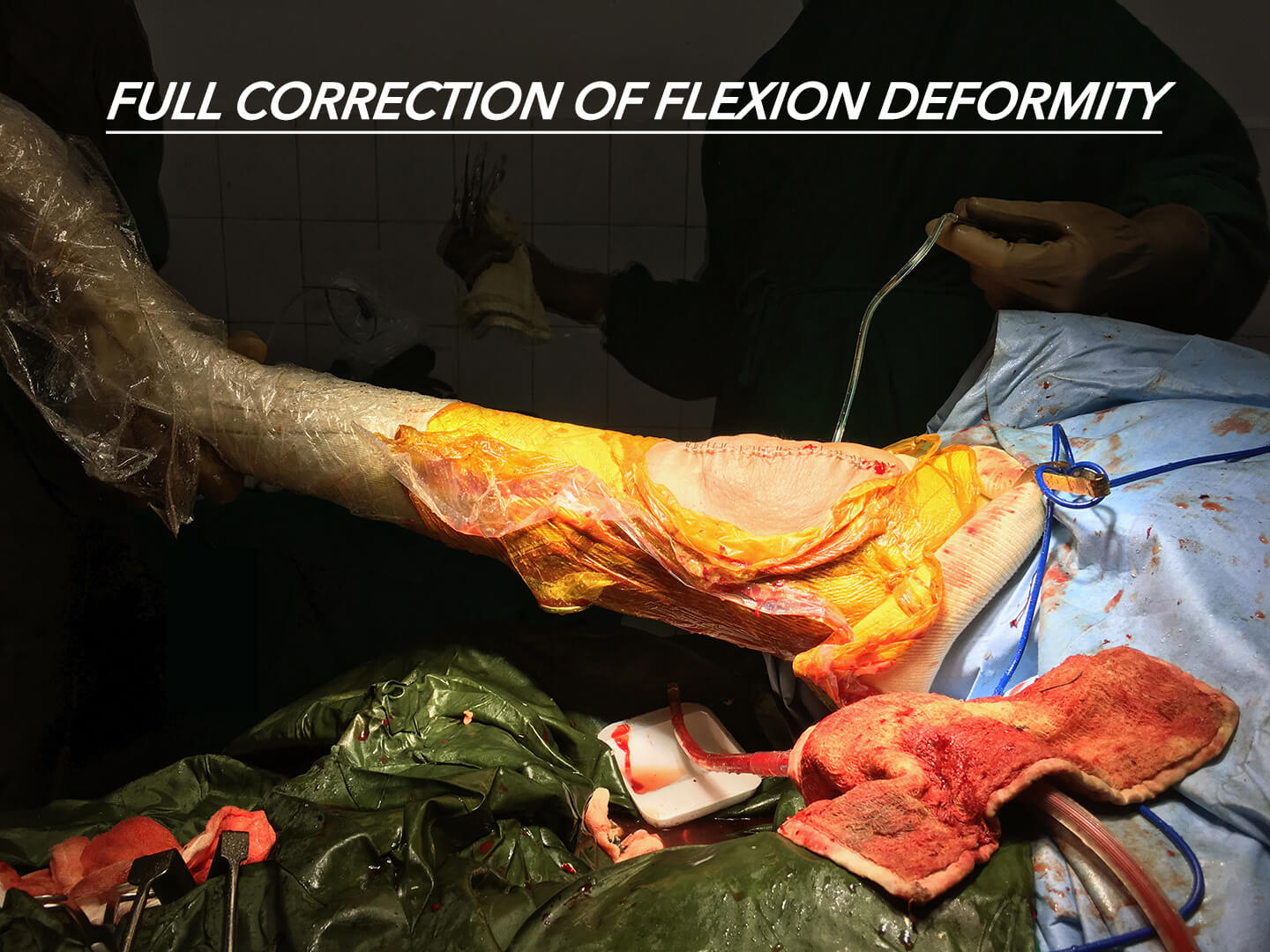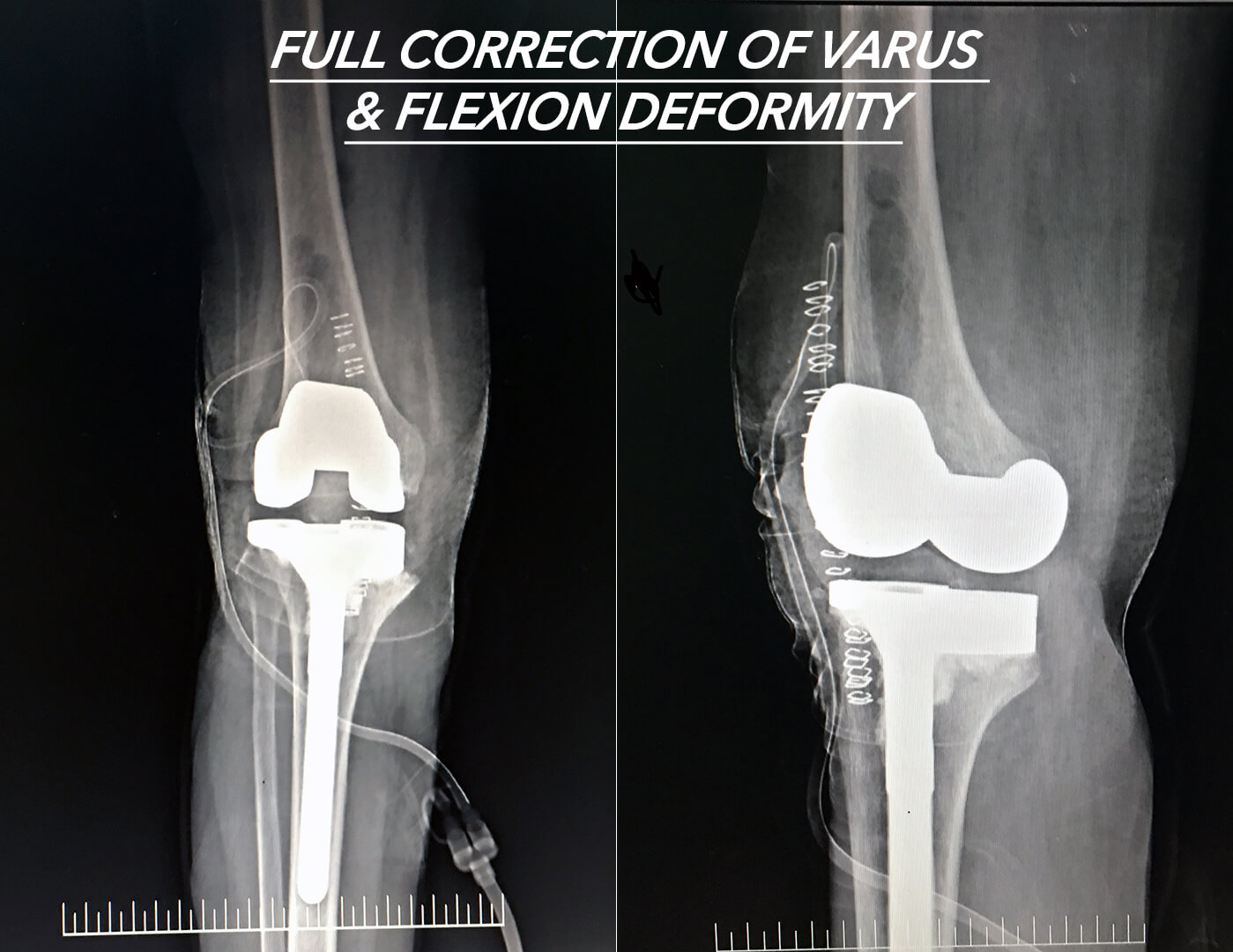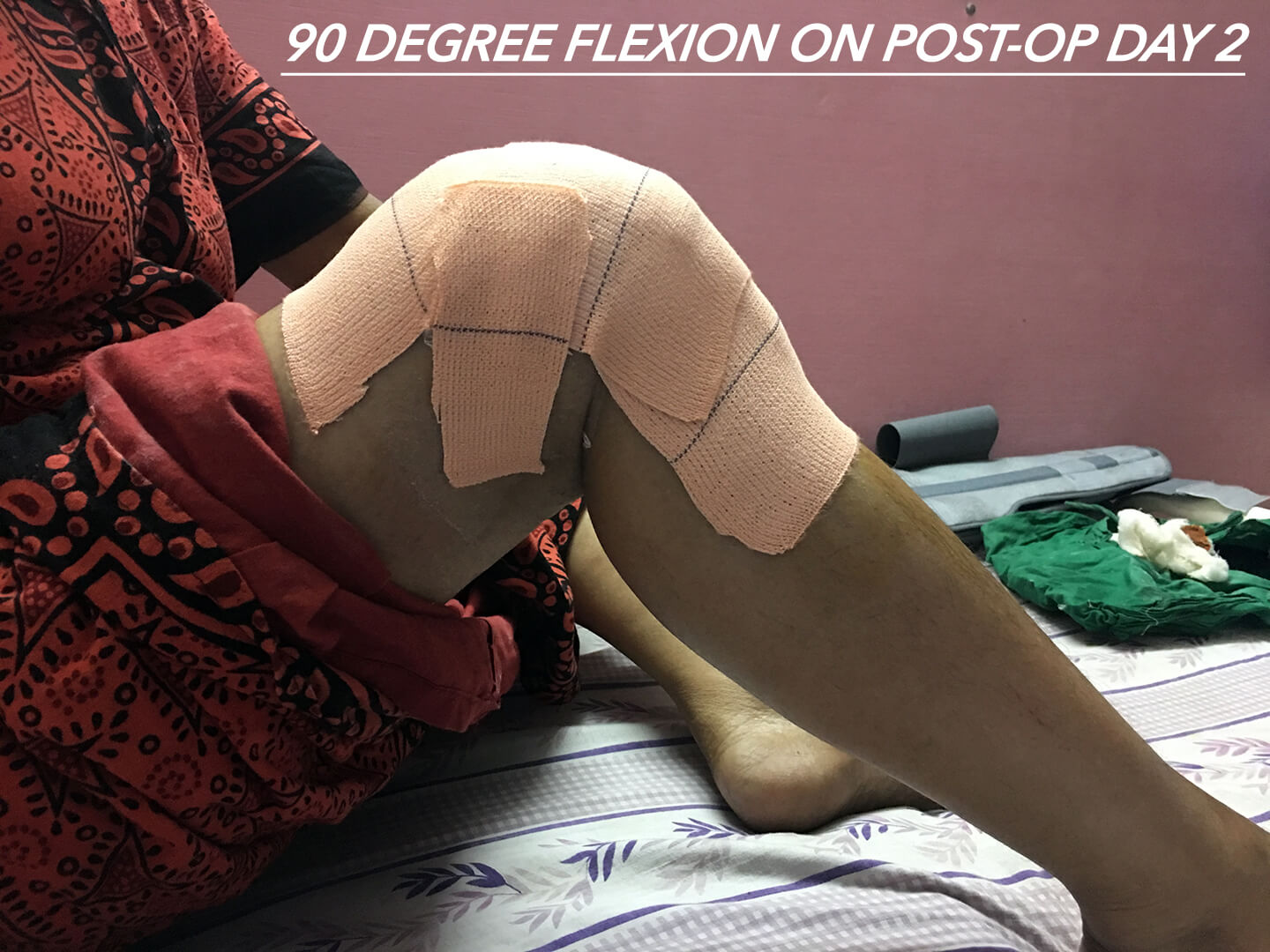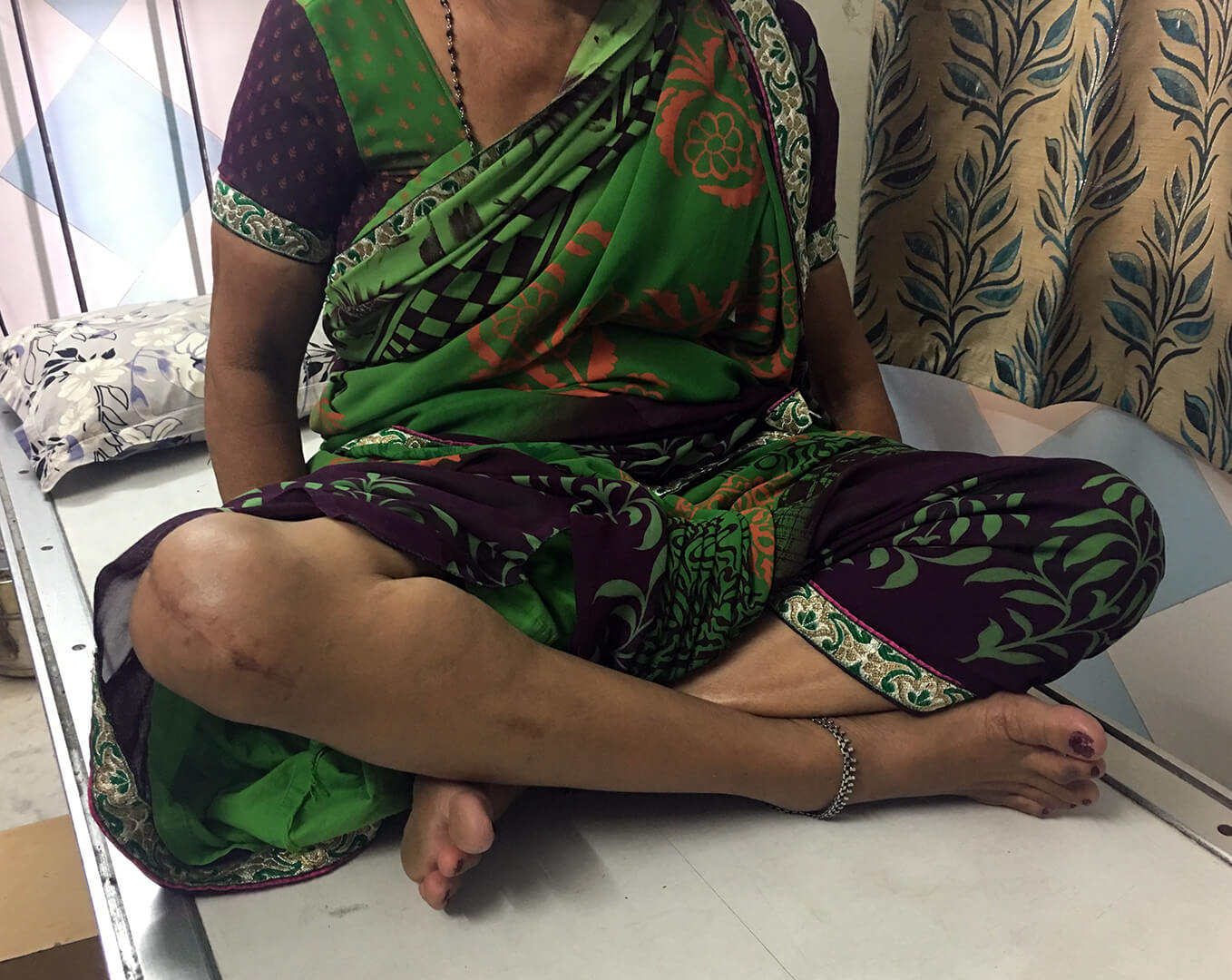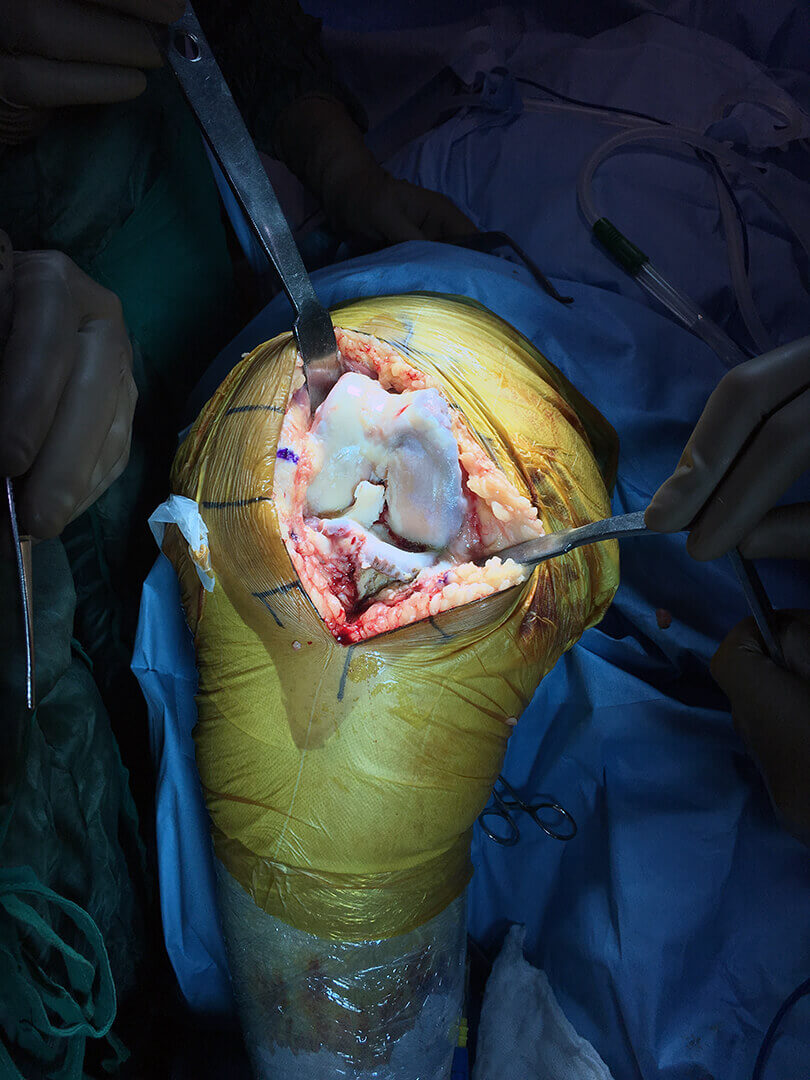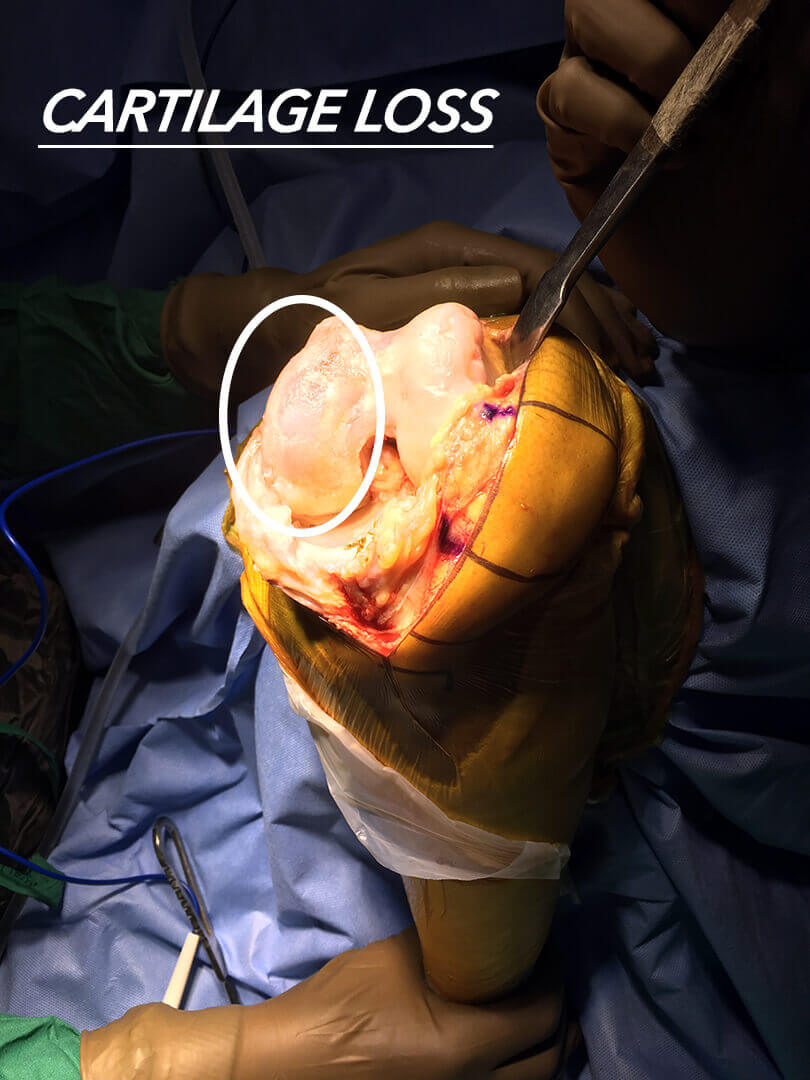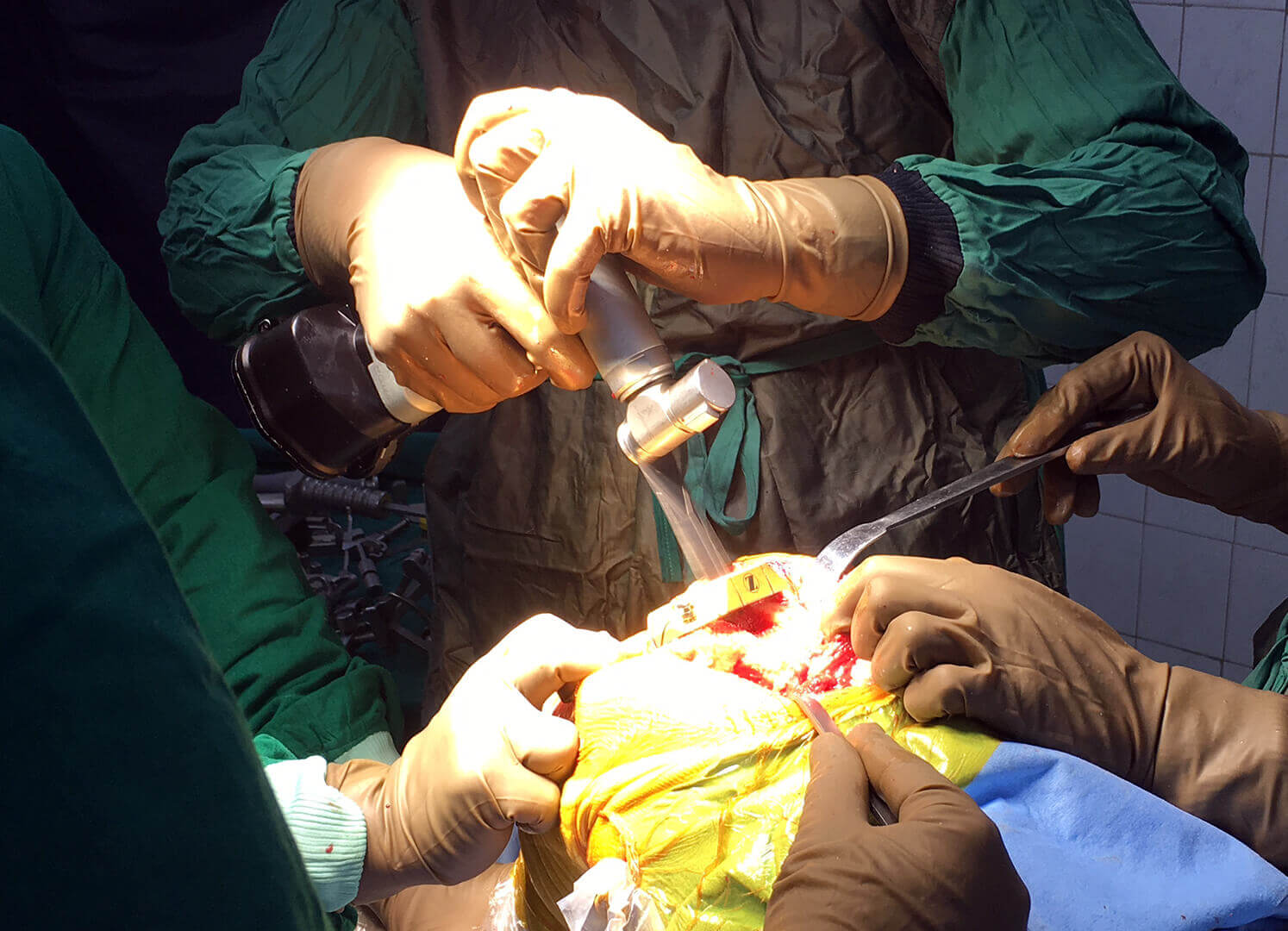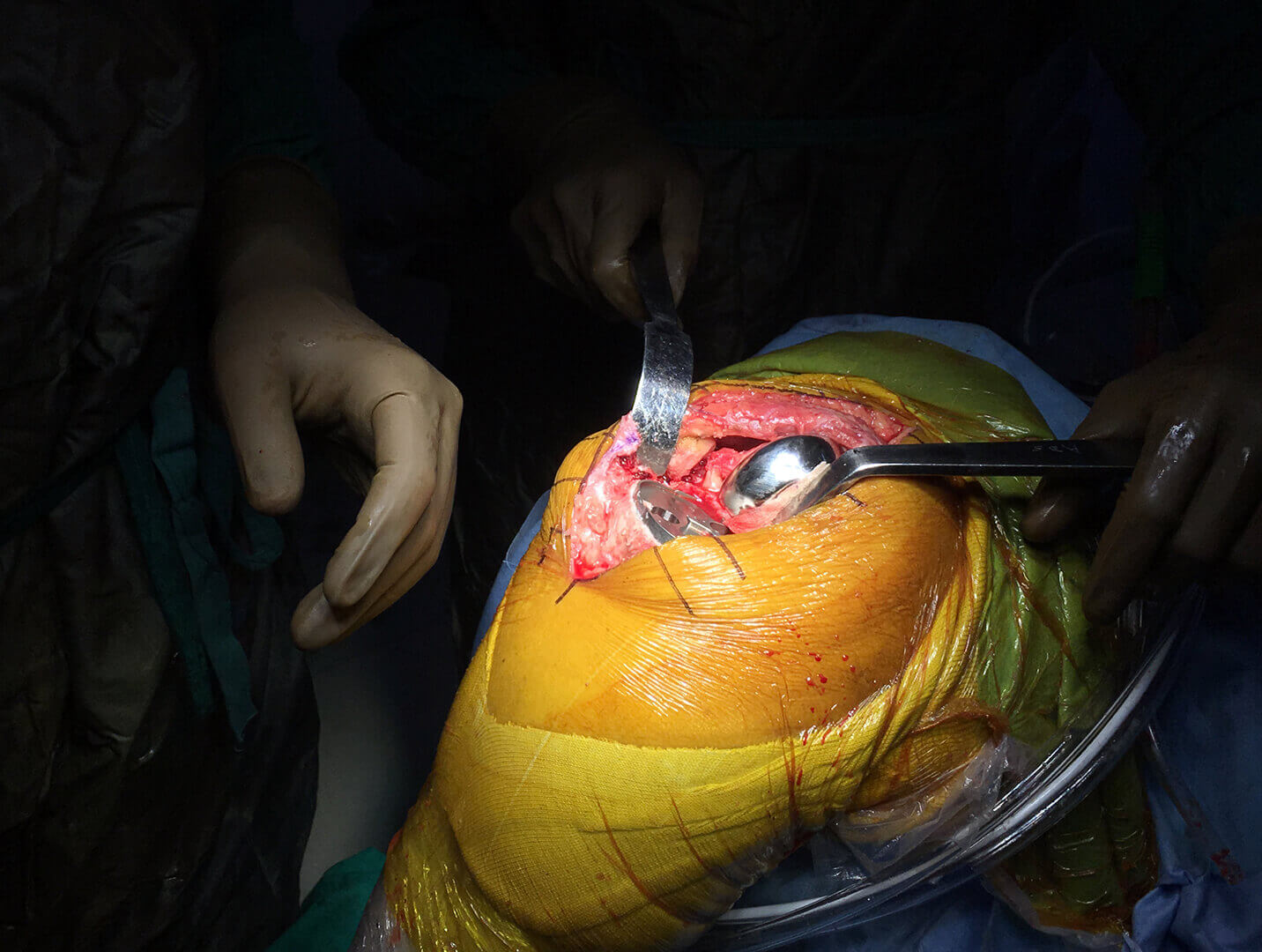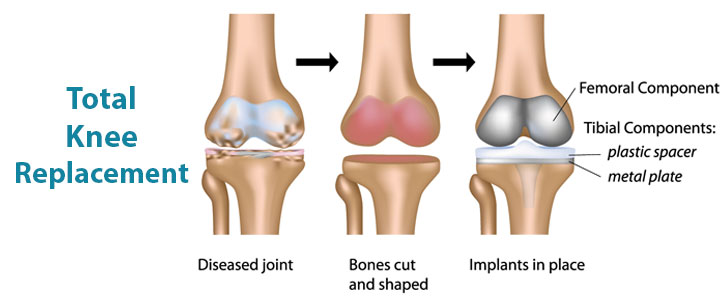
What is Arthritis?
In simple terms, arthritis is damage of the joint due to inflammation. Knee joint is most commonly affected joint. It is more common in females after 50 years of age.
What are the causes of knee joint arthritis?
Primary osteoarthritis:
Itis related to the aging process and typically occurs in older individuals. The exact reason is unknown but many underlying factors have been identified.
• Excessive body weight
• Faulty habits leading to abuse of the joint
• Lack of physical exercise
• Osteoporosis
• Hereditary factors
• Female gender
• Repeated High Impact Sports Activity
Secondary osteoarthritis:
Inflammatory condition of the joint such as
• Rheumatoid arthritis
• Gout
• Previous neglected trauma
• Inflammatory arthritis
What are the signs and symptoms of knee arthritis?
• Joint pain, more in squatting, stair climbing, as well as walking and standing for long period
• Tenderness around the joint
• Stiffness, particularly marked in morning
• Clicking sound from the joint during movements
• Locking of the joint (where the knee is unable to fully straighten)
• Swelling around the joint due to accumulation of fluid
What is the underlying damage in knee arthritis?
There is breakdown of the shiny smooth cartilage, which lines the ends of the bone within the joint. These leads to denudation of underlying bone and pain.This damage to the cartilage is irreversible.
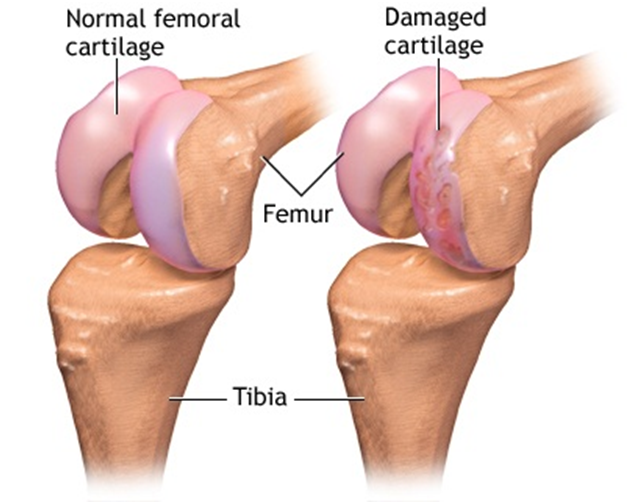
How the arthritis is diagnosed?
In addition to symptoms and physical examination findings, the diagnosis of the arthritis is further confirmed by standard standing X-rays of the knee joints. Load bearing X-rays are most important as they exactly show amount of loss of cartilage in form of decreased joint line space.
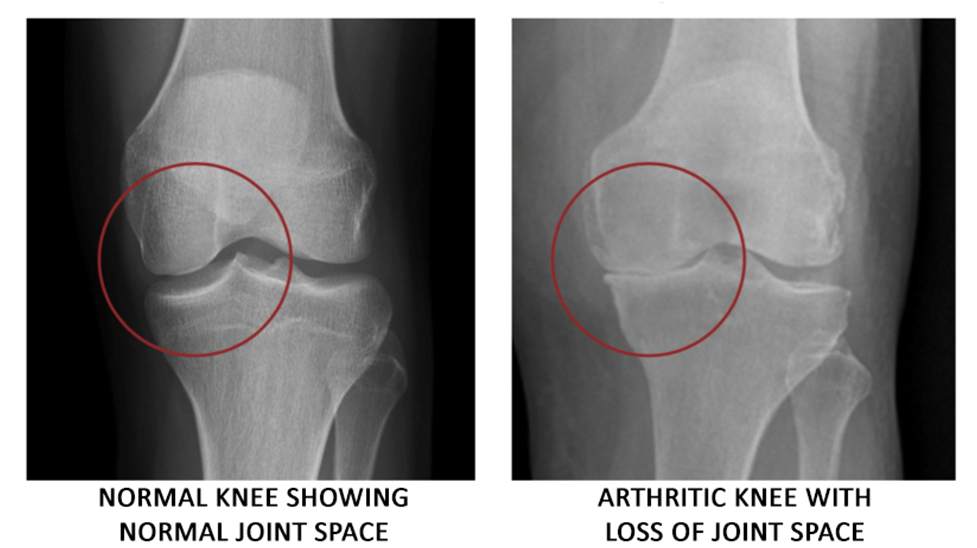
MRI can detect cartilage damage and loss at very early stage and is particularly helpful in initial stages of the arthritis.
Apart from that, secondary inflammatory arthritis is diagnosed in blood tests.
What are the treatment options for Knee Arthritis?
Majority of the early as well as moderately advanced cases of osteoarthritis can be managed without any surgery. Even in advanced cases of arthritis, conservative methods are first advised. If the conservative methods fail, then only surgical procedures are advised.
What are the modalities of non-operative treatment of knee arthritis?
There are four main modalities:
A. Avoidance of unnecessary stresses over the joint
• Weight loss
• Restriction of activities to avoid pain and further damage such as squatting, crossed-leg sitting and stair climbing as well as running
B. Strengthening of the muscles around the knee joint
• Exercises to improve muscle power surrounding the knee joint at home
• Physiotherapy sessions to improve the strength by a trained doctor
• Activities such as swimming or cycling are encouraged to keep active and maintain fitness and weight loss
C. Medicines
• Occasional use of pain-relieving medicines during phases of sudden severe pain
• Cartilage protective agents such as glucosamine
• Injection of lubricating agents inside knee joint (Viscosupplementation) with agents such as hyaluronic acid may also yield relief in certain cases of early arthritis. (Results are unpredictable)
D. External Supports
• Hinged knee braces to provide extra support the joint during loading activities
• Specific customized braces may also be useful in certain cases
What are the Surgical Options for Arthritis?
Ultimately, if pain persists despite medications, and is preventing you from performing your work, leisure, and family activities, surgery may be necessary. Surgery depends upon the age of the patient as well as extent of disease.
1. Total Knee Replacement
2. Unicompartmental Knee Replacement
3. High Tibial Osteotomy
Total Knee Replacement (TKR)
This procedure is ideal for you if you are
• More than 60 years
• Having disease in two or all three compartments of the joint
How it Is done?
• The knee joint is opened from the front without cutting the muscles around your knee joint with our special technique (Sub-vastus Approach)
• All diseased bone and cartilage are removed using special instruments and replaced with a metallic components which are fixed with a special cement ((Minimum bone is removed which is necessary))
• High-quality plastic bearing is inserted in-between which acts to move the joint
• Good quality imported implants are likely to last more than 25 years
• We perform the surgery via minimally invasive sub-vastus approach where the muscles around your knee joint are not damaged or cut leading to faster and complete recovery without any need of physiotherapy.
When will I be able to walk?
• With our special surgical technique, you will be able to walk only after 12 hours of surgery. There is no need for any bed rest.
• You will also be able to bend your knee immediately after surgery.
When will I be able to go home?
• We will teach you walking with minimum support on the second day with exercises to do at home. Bending of the replaced knee is increased on second day.
• We will teach you to climb the stairs up and down on the third day and you will be able to walk without any support on this day.
• We will change the dressing and you will be able to go home on the 3rd day itself.
What will be further treatment after surgery?
• You will be required to come for dressing at regular intervals till the stitches are removed.
• You will be able to resume all your household duties from the day you are discharged as per your comfort and recovery.
What is the time of total recovery?
• Total recovery time varies from patient to patient and depends upon various factors
| Patient related Factors | Surgeon Related Factors |
|---|---|
| Amount of damage to the joint before surgery | Meticulousness and skill of the surgeon |
| Strength of your ligaments before surgery | Appropriate balancing of your joint |
| Power in your muscles before surgery | Type of implant used |
| Age | Whether the muscles were cut or not during the surgery |
| Toughness of your bones | Experience of the surgeon |
• Total period of recovery ranges from 1 month to 3 months in majority of the cases
Unicompartmental Knee Replacement (UKR)
This procedure is ideal for you if you are
• Less than 55 years of age
• Having very advanced disease in only inner or outer part of the joint with some or no involvement of other parts
• Not much overweight
How it Is done?
Knee joint is opened from front through a small incision and the diseased bones are removed. However, ligament of your knee joints are not removed.
It is replaced with special designed metal components which are fixed with your bones with cement.
When will I be able to walk?
You will be able to walk the same day of surgery.
When will I be able to go home?
You will be able to go home on the next day of surgery.
What will be further treatment after surgery?
It is same as total knee replacement.
What are the advantages?
1. Smaller incision
2. Less bleeding
3. Less post-operative pain
4. Reduced stay in hospital,
5. Feeling of a more “normal” knee.
In some patients, if the healthy side is damaged after a few years; it can be converted to a total knee replacement.
High Tibial Knee Osteotomy
This procedure is ideal for you if you are
• Less than 55 years of age
• Having early or moderate disease in only inner part of the joint with some or no involvement of other parts
• Have inside bowing of your legs causing more stress on the inner side
• Overweight
• Heavy laborer
The aim of knee osteotomy is to change the weight distribution of the knee to from an area of arthritis to an area which is unaffected.
An MRI of the knee joint is done previously to assess the status of cartilage in the unaffected side of the oint. Special X-rays are alos carried out to calculate exact amount of correction.
How it Is done?
A cut is made below your knee joint and the bone below the knee joint is cut. It is adjusted in a way so that the angle of your leg is changed and is fixed with plate and screws.
When will I be able to walk?
You will be able to walk the next day of surgery with the help of a walker. You will not be able to put weight on your leg for six weeks.
When will I be able to go home?
You will be able to go home on the third day of surgery.
What will be further treatment after surgery?
You will be required to change dressings at regular intervals till stictches are removed.
Special exercises and knee bending is allowed after 5 days of surgery.
You will be able to put some weight on your operated leg after 6 weeks of surgery.
You will be able to walk without support after three months of surgery.
What are the advantages?
1. Preservation of natural knee joint
2. Feeling of a more “normal” knee.
3. Revision to TKR is easier if required (as compared to UKR)
In some patients, if the healthy side is damaged after a few years; it can be converted to a total knee replacement.
What if I am having contiuous pain / difficulty after my knee replacement?
There are many causes of continued pain and difficulty after a knee replacement.Apart from lack of exercise, major reason for the continued pain is due to a failed knee replacement.
Many problems during or after the surgery may lead to failed knee replacement
1. Infection- Either during surgery or due to spread from the body
2. Loosening – Leading to de-bonding of the implant from the bone
3. Wear – as the polyethylene bearing wears down, the knee can become increasingly unstable
How the failed knee replacement treated?
• You need to undergo a careful assessment of the causes of failure with an specialist surgeon. You may need to undergo a series of blood reports as well as X-rays/ CT scans also.
• Once the cause of the failure is identified, a revision knee replacement surgery is the ultimate solution.
• You may need to undergo more than one surgery for a long-lasting and successful treatment.
Actual patient 1
Total Knee Replacement (TKR)
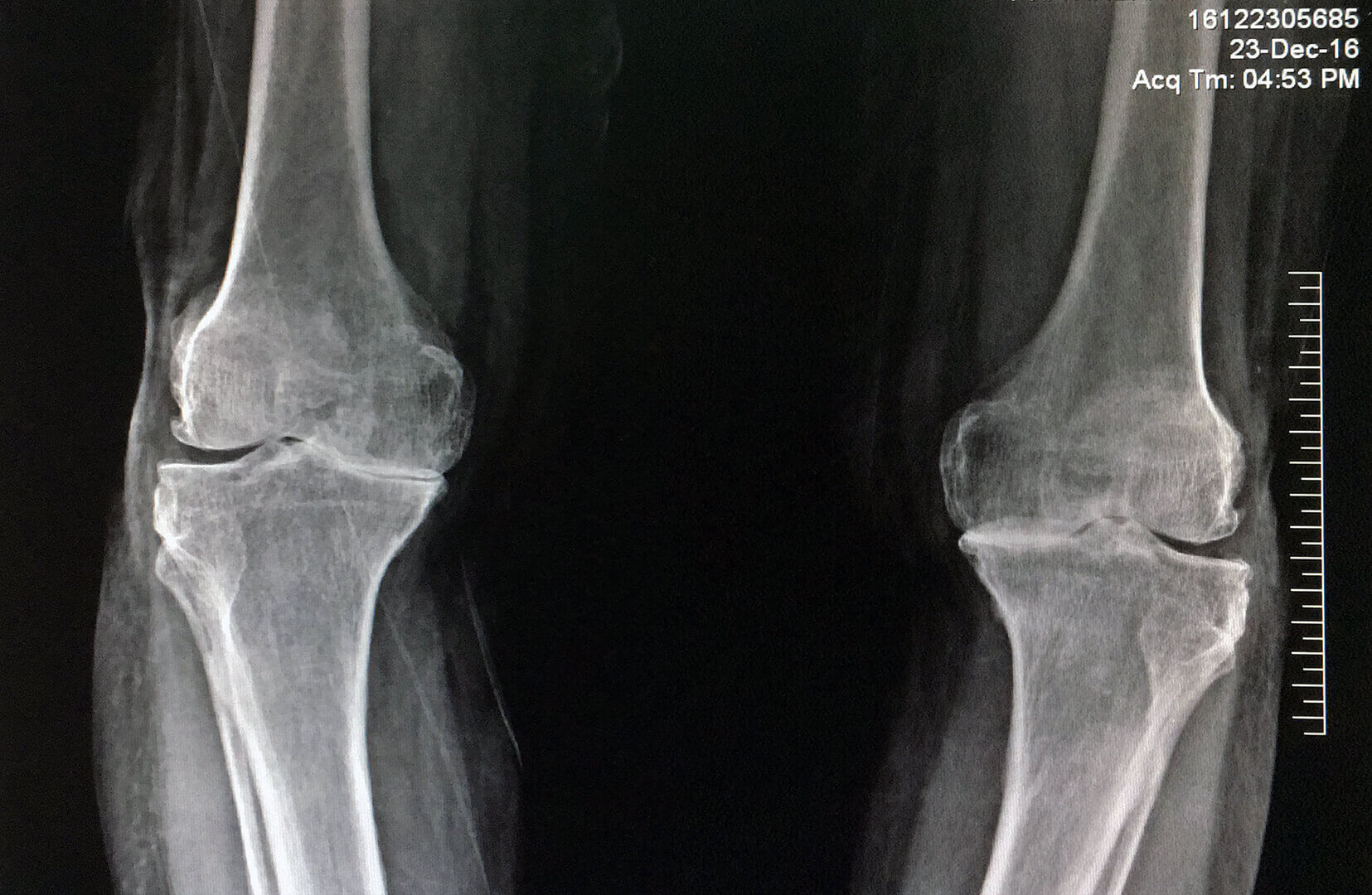
Pre-operative Xray
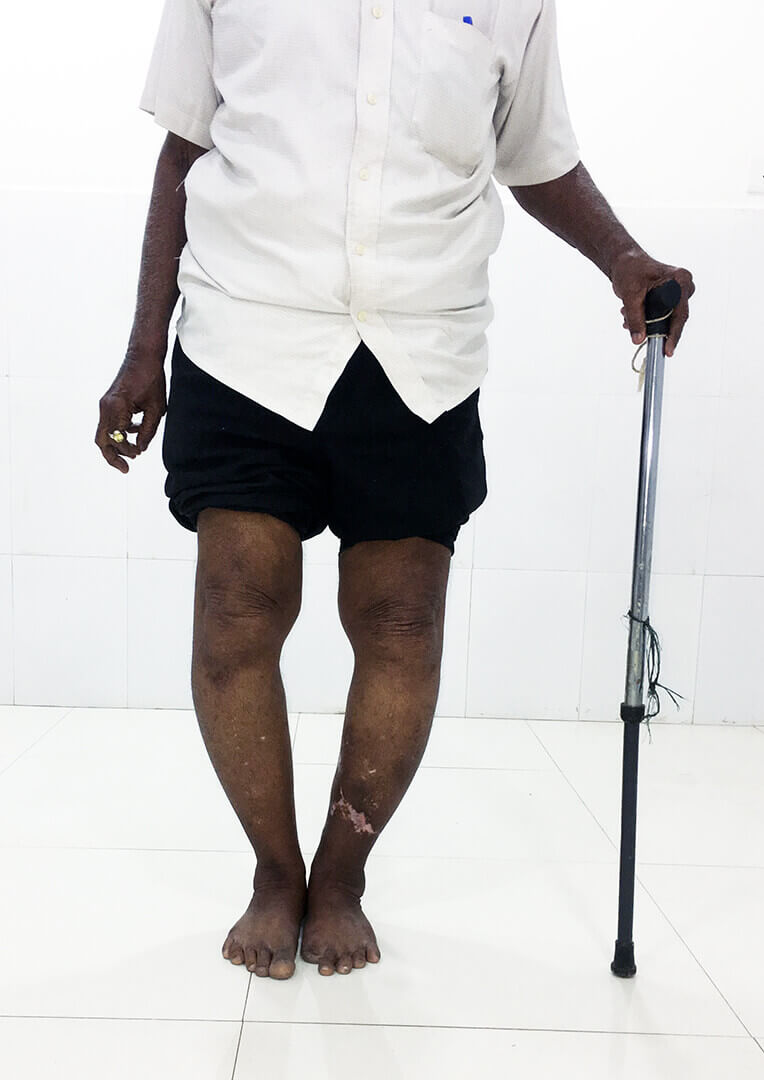
Pre-operative Deformity
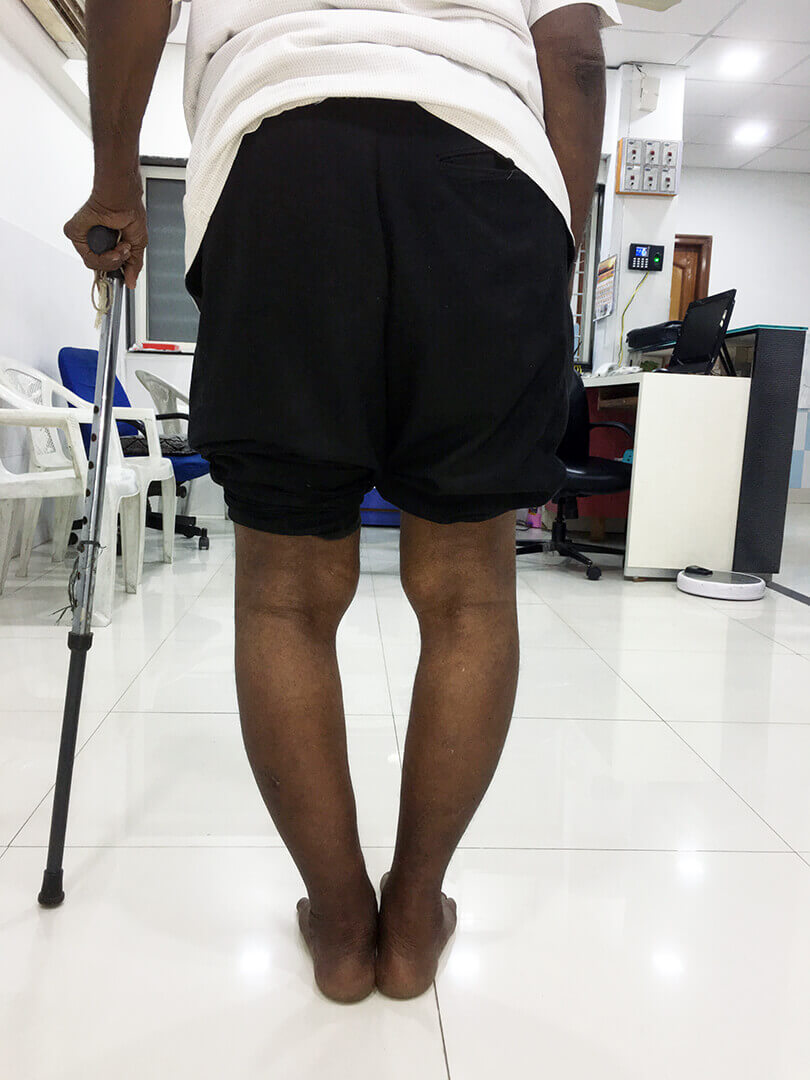
Pre-operative Deformity 2
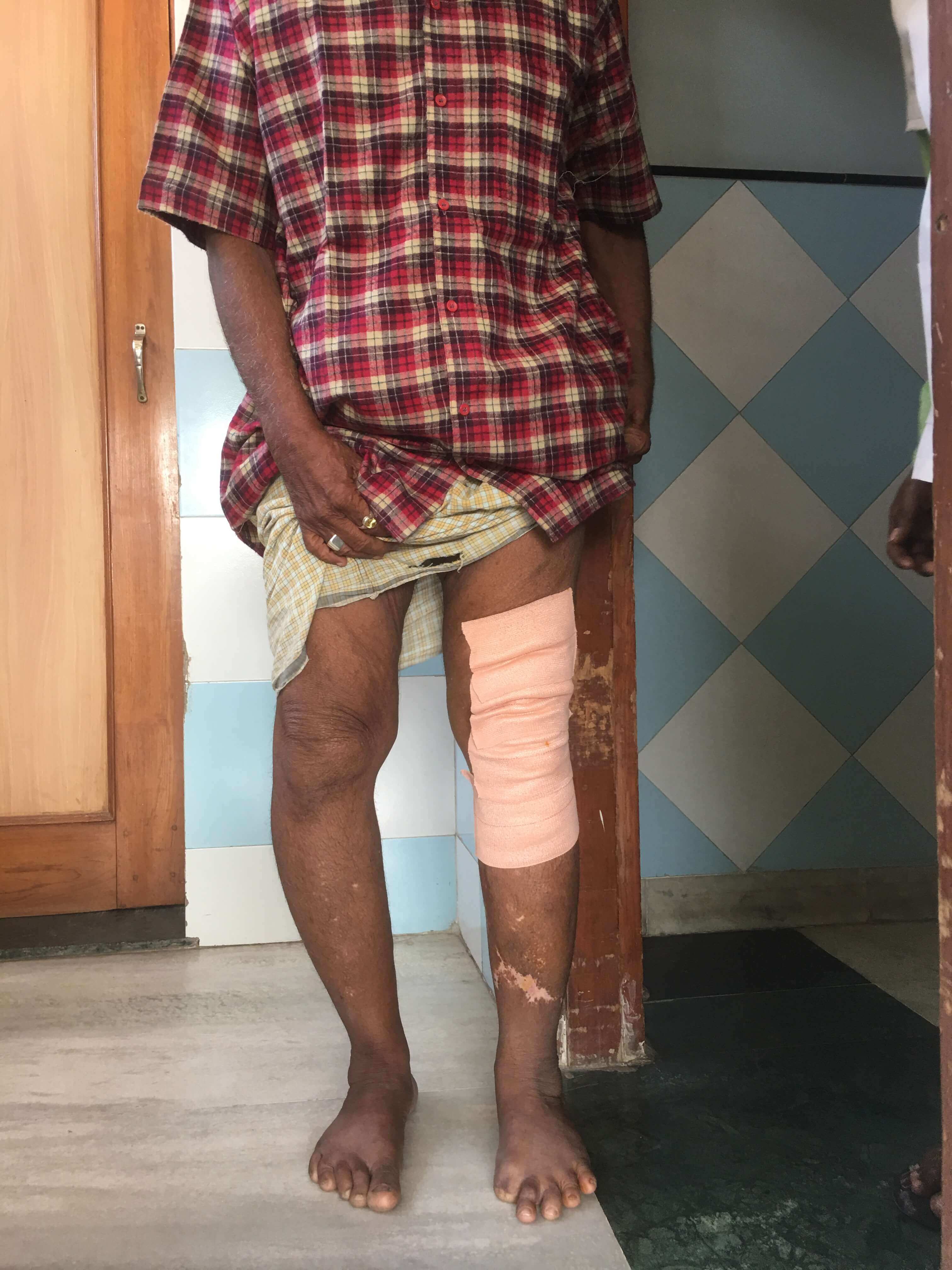
Correction after first Surgery
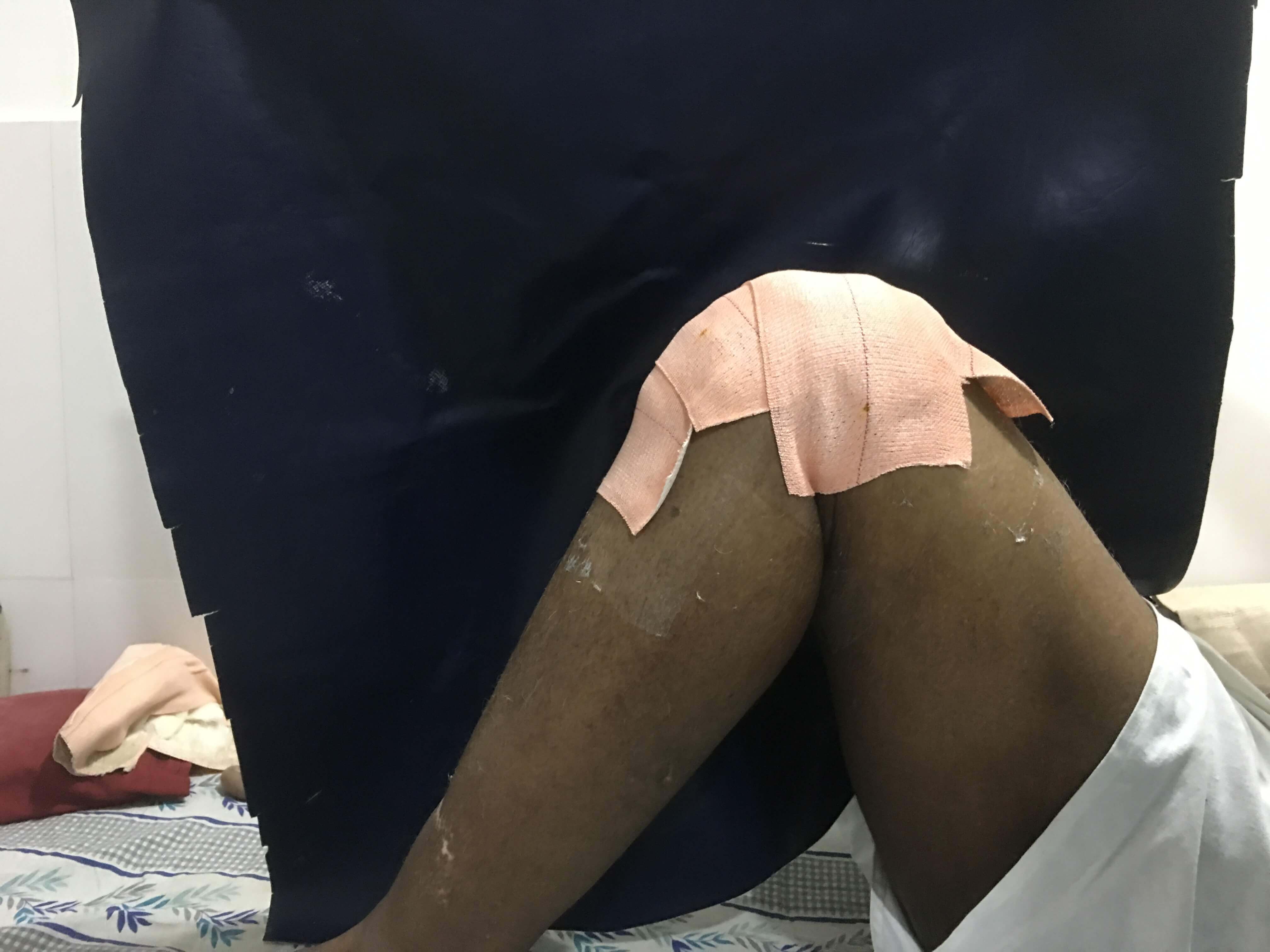
After 1st Surgery Post-op Day 2
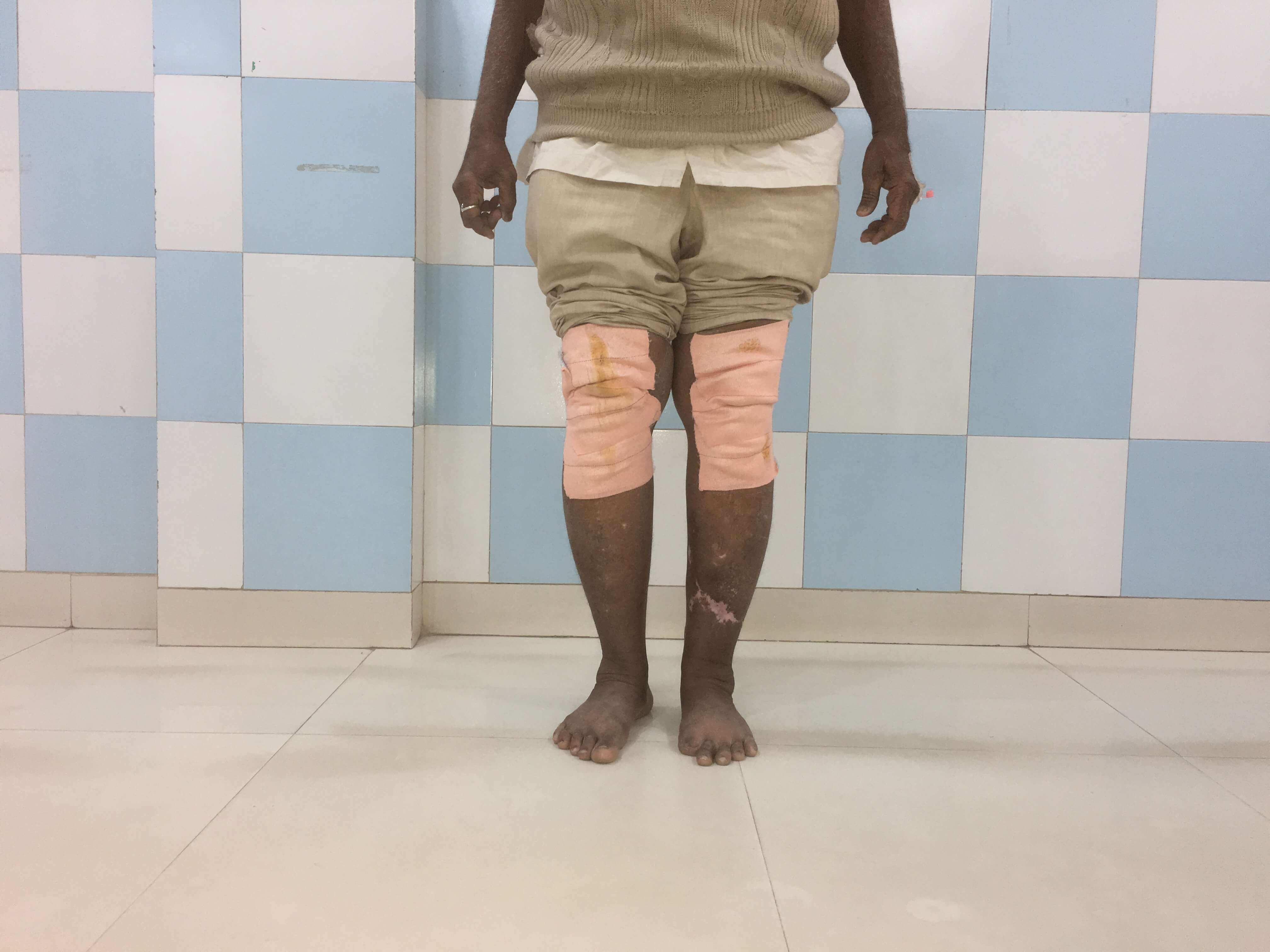
Correction after Both Surgeries
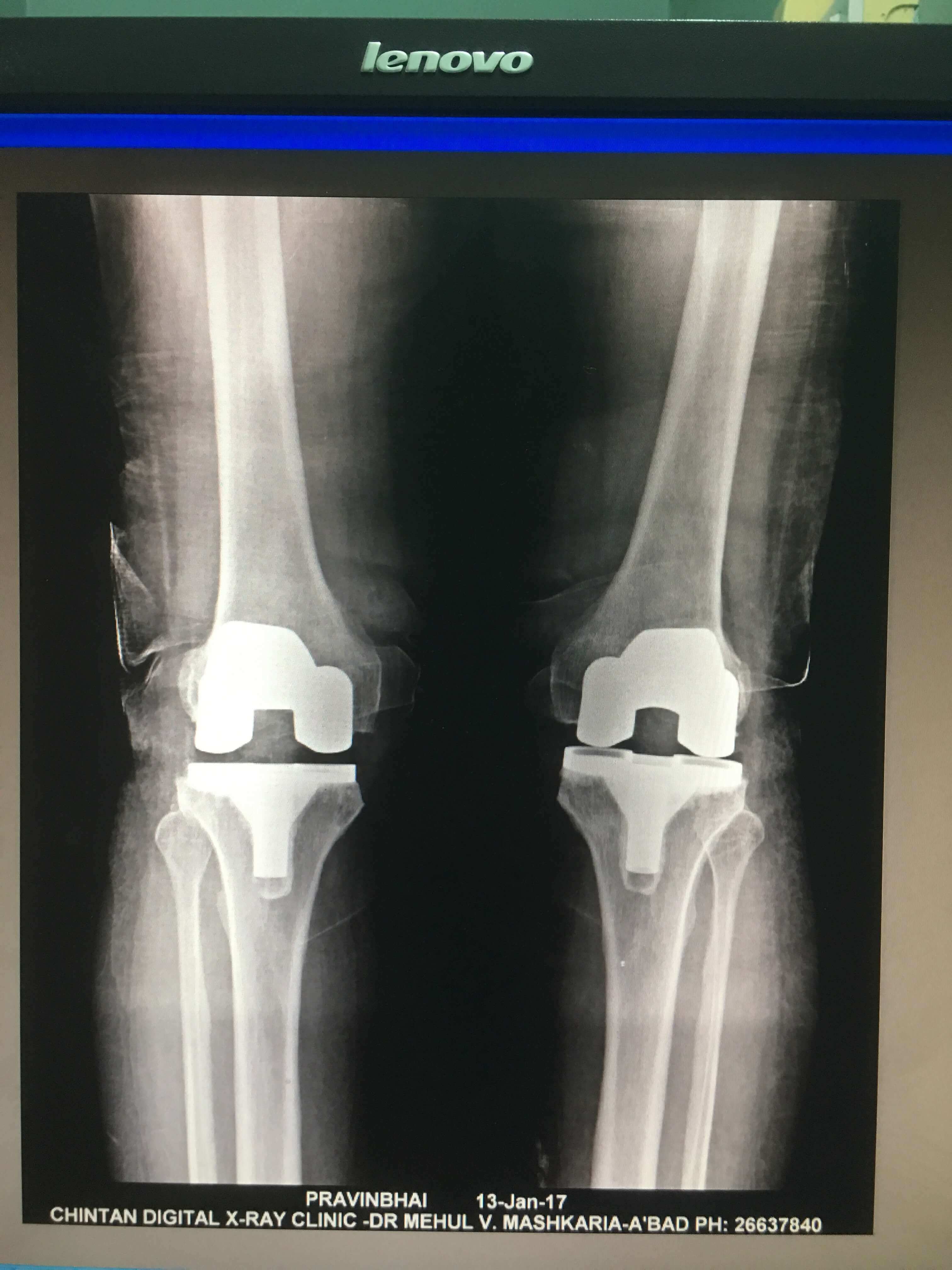
Post-op Xray
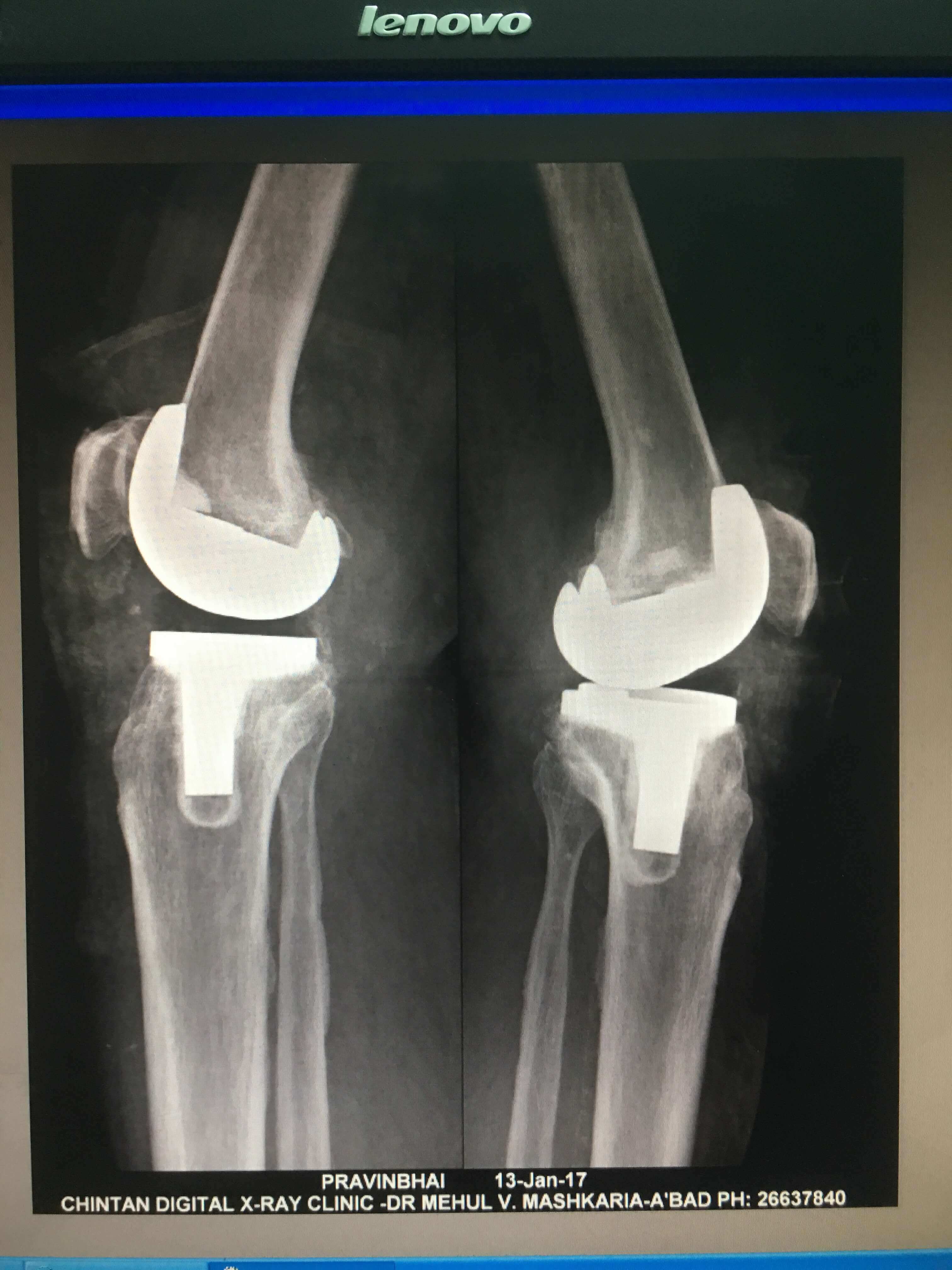
Post-op Xray 2
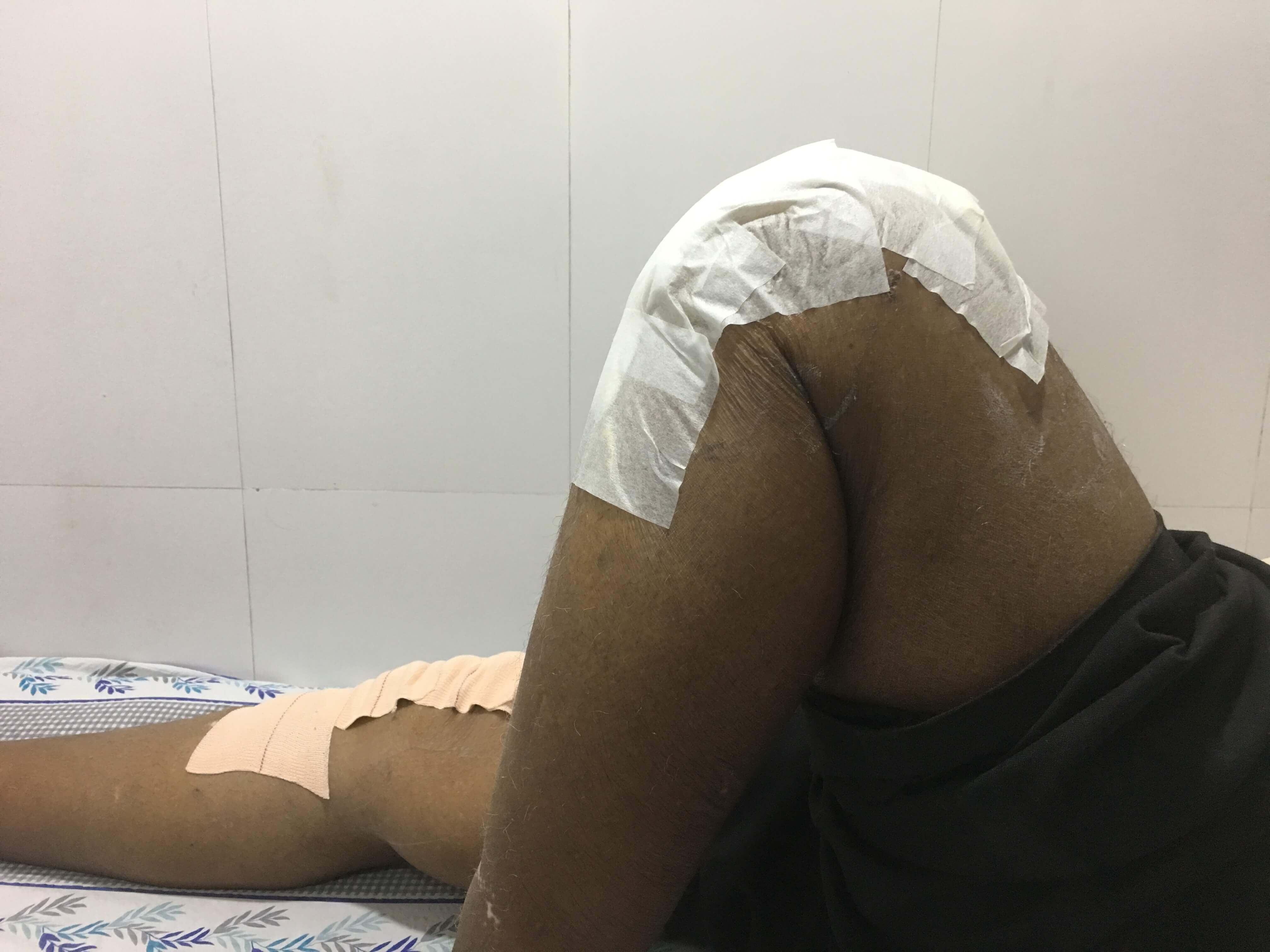
Flexion at Day 12
